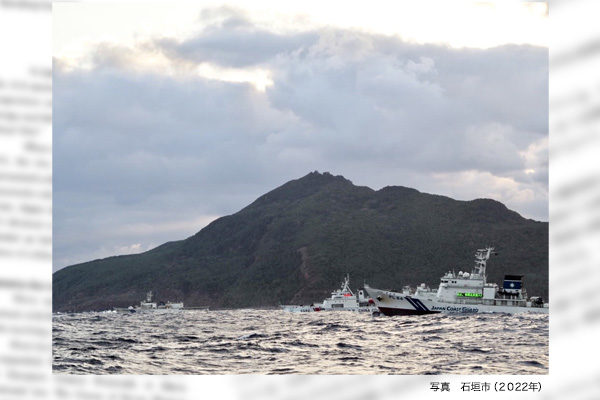For about 15 minutes from around 12:21 on May 3, a helicopter from a China Coast Guard ship in Japan’s territorial waters around the Senkaku Islands violated Japan’s airspace above the waters. F-15 fighter jets of the Japan Air Self-Defense Force scrambled from the JASDF Naha base in Okinawa to intercept the helicopter. Before they reached the Senkaku airspace, some 400 kilometers from the base, however, the helicopter returned to the CCG ship.
This was China’s third violation of Japan’s territorial airspace around the Senkaku Islands. What made the latest airspace violation different from the past ones was that the Chinese helicopter violated Japan’s airspace almost the same time as a civilian Japanese aircraft entered the airspace around the Senkaku Islands. China thus attempted to make its law enforcement around the Senkaku Islands a legitimate fait accompli for the reason that the Japanese aircraft “violated” their airspace above the Senkaku Islands to which China has made territorial claims. The attempt should be viewed as a step-up in China’s behavior around the islands.
Self-restraint by the government
Foreign Minister Takeshi Iwaya made his first comment on the incident at a press conference ten days later on May 13. Asked about the government’s request for the civilian aircraft operator to refrain from flying, he replied that the request was made for the purpose of ensuring the safety of the flight. In order not to overprovoke China, the government is tightening restrictions on Japanese people for the reason that it cannot guarantee safe flights over the Senkaku Islands. This raises doubts about whether the Japanese government effectively controls the Senkaku Islands.
On the other hand, the ruling Liberal Democratic Party’s sense of crisis was reasonable. At an LDP meeting on May 9, Hirofumi Nakasone, chairman of the party’s Foreign Policy Research Commission, expressed concern that Chinese drones or helicopters may land on the Senkaku Islands in the future. Minoru Kihara, chairman of the LDP’s National Security Research Commission, questioned how to respond to airspace violations in consideration of differences in flight altitude, speed, and flight cost between helicopters and fighter jets.
Full-fledged responses should be worked out promptly
As indicated by the latest incident, it would be difficult for JASDF fighters to effectively respond to airspace violations by helicopters departing from CCG ships within Japan’s territorial waters. For this reason, the Japan Coast Guard, which is constantly confronted by CCG ships in Senkaku waters, should be given a mission to respond to airspace violations with helicopters and drones through necessary legislative actions.
As advocated by retired JASDF Lieutenant General Kunio Orita, a member of the Planning Committee of the Japan Institute for National Fundamentals, the Senkaku Island group’s Kuba and Taisho Islands, which are provided to U.S. forces for firing and bombing training under the Japan-U.S. Status of Forces Agreement, should be converted into Japan-U.S. joint training facilities, where JASDF fighter jets should conduct firing and bombing training in order to actualize Japan’s effective control of the Senkaku Islands.
In addition, the JASDF should establish a base at Shimojishima Airport, about 190 kilometers from the Senkaku Islands, to shorten time for JASDF fighters to respond.
Furthermore, in response to China’s persistent cognitive warfare asserting that the Senkaku Islands are Chinese territory, Japan should establish a governmental framework capable of leading and effectively conducting cognitive warfare.
The CCG buildup in recent years has been remarkable, including the enhancement of law enforcement powers, the introduction of naval equipment, full-fledged training, and the expansion of bases. It is no exaggeration to say that the buildup indicates the CCG under the clear instructions of President Xi Jinping aims to land on and occupy the Senkaku Islands in due time. If the Japanese government does not demonstrate its seriousness in its control of the Sekakus now, it will lead to serious problems in the future.
Kiyofumi Iwata is a member of the Planning Committee at the Japan Institute for National Fundamentals. Formerly, he served as Chief of Staff of the Japan Ground Self-Defense Force.


